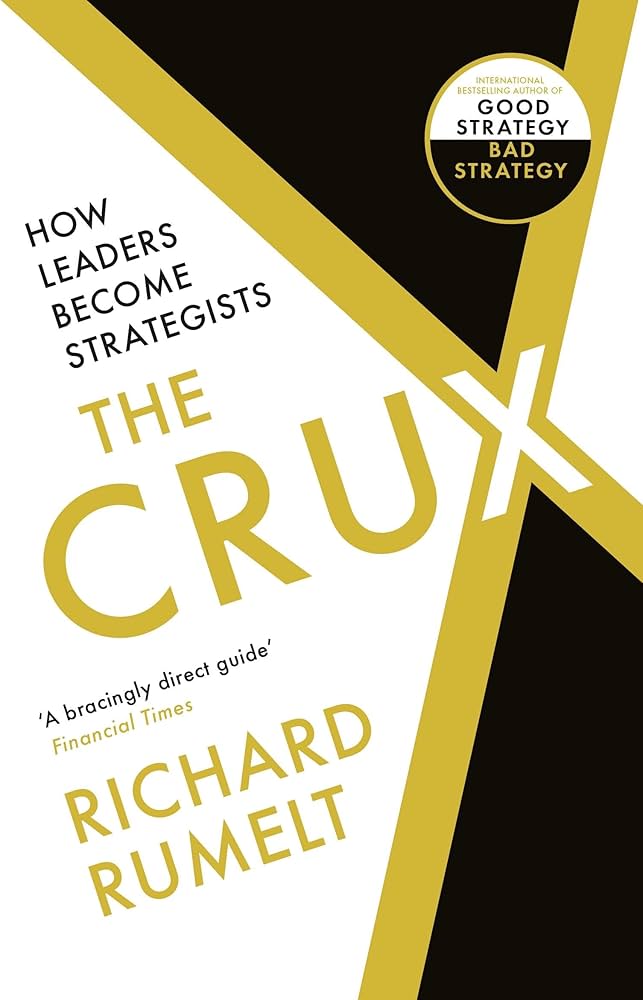What do most organisations miss when doing strategic work? In my experience it’s not recognising and addressing the most significant challenge.
I recently read The Crux, by Richard Rumelt, which states strategy work involves focusing on the crux of the problem. The crux is the most important part of a set of challenges that can be addressed and solved by coherent actions.
Strategy should start with the challenge itself, rather than goals, financial targets, a roadmap of technical solutions, org design or some lofty vision.
Let’s consider Netflix. Of all its challenges, its most significant (the crux) is likely to be it facing increased competition and needing to expand globally.
Therefore it’s reasonable to presume its guiding policies would include 1) Invest in producing original content 2) Expand services into new markets 3) Use data to understand viewer preferences
Consequently, its coherent actions are likely to include 1) Creating and releasing original content 2) Target specific countries with tailored content 3) Using data to inform content production and marketing
This example shows how understanding the crux aligns its people on tackling the most significant challenge. It creates shared intent and aligned autonomy. Any strategic activity that falls outside of this mix of policies and actions should be questioned.
The Crux makes a distinction between management and strategic activities. For example, it says Balanced Scorecards are useful for managing the current business, not for strategic change. They do not help redefine a business; they are a useful management tool for driving results in the existing business (i.e. the status quo).
In conclusion, when it comes to strategy, I find too many firms do not align on recognising and addressing the most significant challenge, and so lack shared intent and coordination. Consequently they will be wasteful, frustrated and less competitive. The Crux is a superb read which articulates and addresses this all too common challenge.
Practitioner’s insights
Here are three practical steps to consider when advising business doing genuine strategy work:
- Identify the crux: Focus on finding the most critical and addressable part of a challenge. This involves judging which issues are most important, assessing the difficulty of addressing them, and concentrating resources. The ‘crux’ is the point where focused action has the best chance of overcoming the most significant obstacles.
- Adopt a challenge-based approach: Strategy should be a continuous process of addressing critical challenges, rather than pursuing long-term goals or a fixed vision. Start by diagnosing the challenge, understanding its structure, and the forces at work.
- Differentiate strategy and management: Strategy work is about defining goals and objectives by understanding the difficulties of overcoming a challenge, whereas management focuses on driving results. Strategy is not about simply setting performance goals or using management tools. Avoid confusing the two, as good strategy work is not the same as management work.

